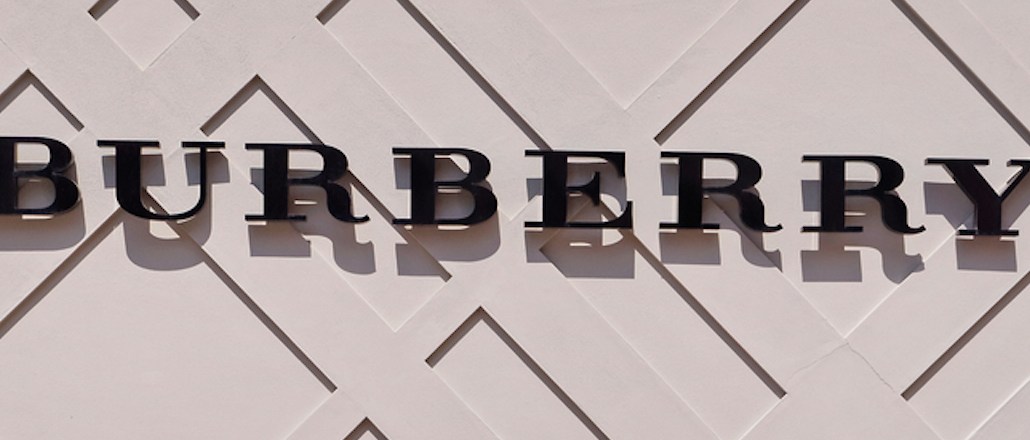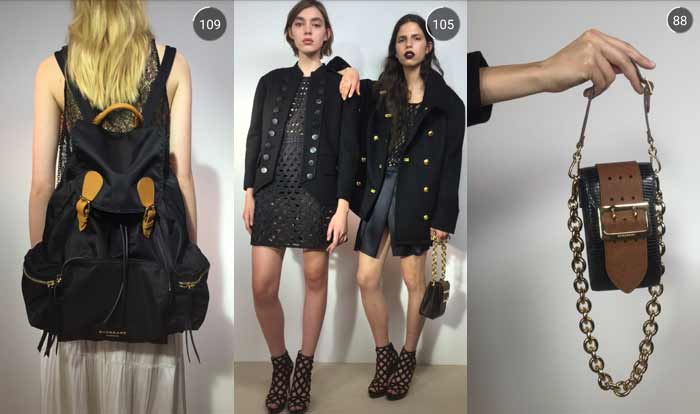Save 50% on a 3-month Digiday+ membership. Ends Dec 5.

If streaming on Snapchat and sharing playlists on Apple Music seems too chummy for a high-brow luxury brand, Burberry doesn’t mind. The British legacy retailer has approached digital channels with more enthusiasm than most, and its latest earnings suggest it’s working.
While overall year-over-year revenue showed sluggish single-digit growth (a trend across other luxury brands like Hermès), Burberry’s efforts to improve its mobile functionality have paid off handsomely. After relaunching its mobile site at the end of 2014 and improving checkout and payment tools, Burberry reported that it tripled its base of mobile shoppers in an earnings call today.
On top of making checkout and payments a more seamless experience on mobile, Burberry has experimented with new mobile and digital efforts that put the brand’s reach on blast. For its Spring/Summer 2016 fashion show in London this September, the brand showed the entirety of its runway collection on its Snapchat channel, a move that caught attention to the tune of 200 million total views.
Year over year, Burberry’s social media following has grown 30 percent, with 5 million followers on Instagram and Twitter and 17 million on Facebook. It was also the first brand to join Apple Music, curating a channel based on the music played during its runway shows.

The Snapchat experiment raised brand awareness and engagement, but the brand hasn’t shied away from driving customers to product pages directly from social. During the 2015 fashion show, Burberry promoted tweets with buy buttons that directed users to its beauty products — something that most big brands have avoided jumping into, waiting to see what happens as smaller retailers experiment. In Japan, Burberry joined messaging app Line, as well as its payment system Line Pay, to both stream runway shows and sell beauty products directly on the platform.
For Burberry, online and mobile sales have doubled their share of the company’s revenue in the past year. In its 2014/2015 strategy report, the company states “blurring physical and digital” as a top priority, reaching for a seamless experience online, on mobile and in stores. In China, Burberry implemented a single-inventory strategy for its mobile store, providing crossover between mobile and Web shopping carts as well as a buy online, pickup in store offer. It’s now rolling out the approach in the U.S. and U.K.
According to Hunter Tura, CEO of Bruce Mau Design, Burberry has forged ahead in the digital sector while other companies have hesitated, and as a result, it’s far ahead.
“Burberry is an industry leader,” said Tura. “They’ve built one of the best digital platforms, but for most, it’s hard. When we’re talking about luxury in the digital context, it’s very difficult. Burberry had to try a lot of different things to get to where they are.”
Burberry’s holistic outlook for its brand isn’t limited to its digital strategy. It recently announced that it would absorb its three diffusion lines, Burberry Brit, London and Prorsum, into one singular brand: Burberry. In a digital market, diffusion lines merely distract from the main goal: seamlessness.
Image via Shutterstock
More in Marketing

The case for and against AI-driven SEO in the zero-click era
As generative AI reshapes search, marketers debate the value of committing (or overcommitting) to an AI SEO strategy.

Hiring program in energy tech sector enlists military veterans to fill data center skills gap
Data center demand is projected to grow 33% annually by 2030, while the industry struggles to find qualified candidates for increasingly complex systems.

‘Regulate us like alcohol, don’t ban us’: Proposed hemp THC ban threatens to shut down countless brands
The proposed ban on THC-infused products was included in the bill Congress passed to end the government shutdown.





